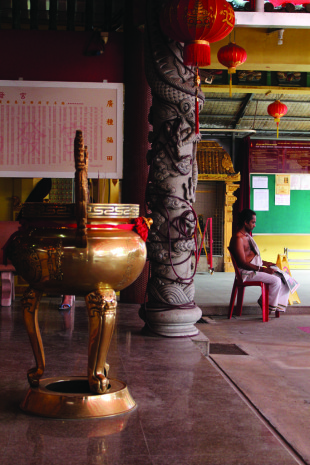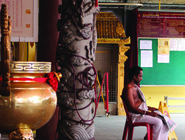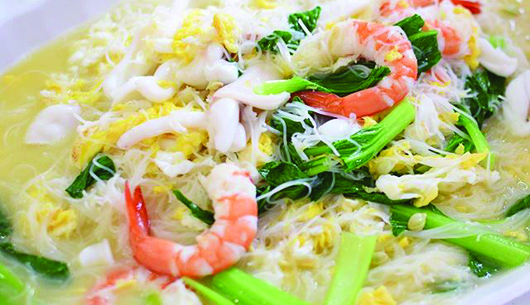
The Hindu priests lit up the pot of fire, emanating thick smoke that enveloped the entire temple. Hindi music started playing in the background as the priests began chanting to it. The devotees knelt down, praying to the shrine of Muneeswaran as the priests conveyed the deity’s blessings on them. No, this is not a scene at a Hindu place of worship, but at a Chinese temple known as Hock Huat Keng.
Nestled in the heart of Yishun Industrial Park A, this peculiar temple was founded in 1996 as a merger between a Tua Pek Kong temple and Muneeswaran shrine. The history of these two religious centres go way back to the early 1900s. Originally located off the current Yio Chu Kang road, they were built for the Chinese and Indian settlers around the vicinity respectively.
But soon, the settlers started worshipping both deities together as they stood for the same thing – protection against evil. This phenomenon eventually forged a friendship between the two shrines. When the area was slated for re-development 30 years ago, the two relocated to its current area, taking their places under the very same roof.
Today, Hock Huat Keng is still a popular place of worship for such devotees, who worship both the Taoist and Hindu deities whenever they are there. The caretaker, who gave his name as Mr Ng, said that the temple would be jam-packed with people from both religions every Saturday because of an event where Heibai Wuchang, or the Hell God of Wealth, would be called upon to possess the shaman to speak to the congregants.
“Both the Indians and Chinese would come and seek for wealth and advice from Heibai Wuchang,” said the 66-year-old, who served as caretaker for two years. “I see lots of familiar faces and frankly, I’m quite surprised the Hindus would come for the ritual.”
The temple, however, is usually roomy on weekdays. But there are those who would still visit the temple now and then to ask for blessings from both Tua Pek Kong a nd Muneeswaran.
Raveen Kumar, a 37-year-old taxi driver, is one such devotee. He goes to the temple whenever he has the time in order to seek safe journeys on the road.
“I usually operate around the north so sometimes, I make a detour here to ask for protection from both deities because I’m always driving,” said Mr Raveen. “Although I’m a Hindu, I’m quite open to praying to other gods because you can get the best out of them.”
Mr Raveen also added that he only knew about the temple recently by coming across a signboard near the vicinity. “I saw the signboard, and the temple had a Chinese name. So I was quite intrigued to visit it because it hosts Muneeswaran.”
But there are those who already knew about Hock Huat Keng for months. Teo Zhi Hao, 23, makes it a point to visit the temple every Friday after his father brought him there for the first time six months ago. He said that his family’s belief in divinity had been ingrained in him.
“My family has been strong believers in God since I was young so since I work around the area, I would just drop by and pay my respects to the deities here,” said the foreign worker coordinator.
But his regular visits to the temple proved to be more than just that. “Lots of the foreign workers I’m in charge of come from India or Bangladesh, and praying to a Hindu god really taught me to respect them and their religions,” he added.






